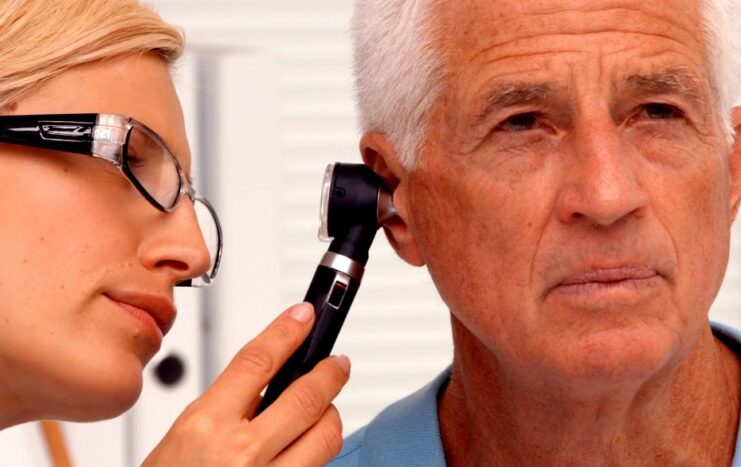Otitis Externa (OE) is a condition that, while common, is often misunderstood. This comprehensive guide aims to shed light on this ear infection, offering valuable insights into its causes, symptoms, treatments, and preventive measures. Whether you’re a concerned individual or someone looking to expand their knowledge on ear health, this article is brimming with information to make the complex simple and the intricate understandable.
Otitis Externa (OE) is an infection that occurs in the ear canal, a warm and dark environment conducive to the growth of bacteria and fungi. This infection is distinct from Otitis Media, which affects the middle part of the ear, highlighting the diversity in ear infections and their respective impacts.
The ear canal is a delicate ecosystem, and any imbalance, such as the removal of protective ear wax, can lead to OE. This condition is prevalent among individuals who are frequently exposed to water, like swimmers, as water can disrupt the ear’s natural defenses against infections.
Causes and Risk Factors
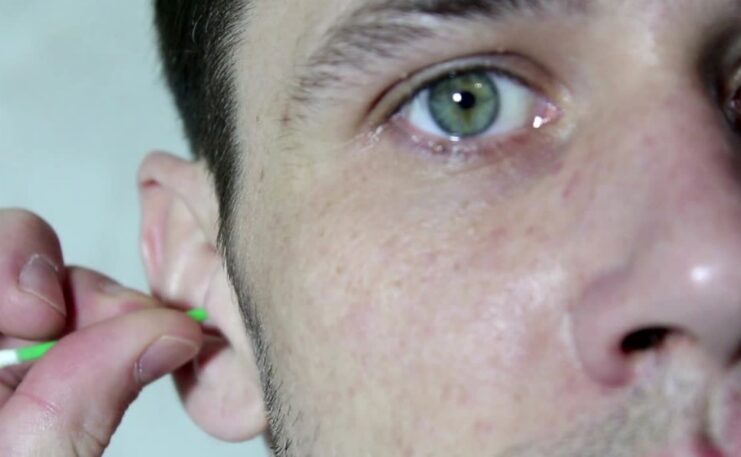
The development of OE is often attributed to various causes and risk factors. Excessive exposure to water is a common culprit, as it can wash away the protective layer of ear wax, creating a suitable environment for germs and fungi to flourish.
In addition to water exposure, injuring the skin in the ear canal by inserting objects can also lead to infection. Furthermore, skin conditions like acne or psoriasis that occur in other parts of the body can manifest in the ear canal, contributing to the development of OE.
Recognizing the Symptoms of OE
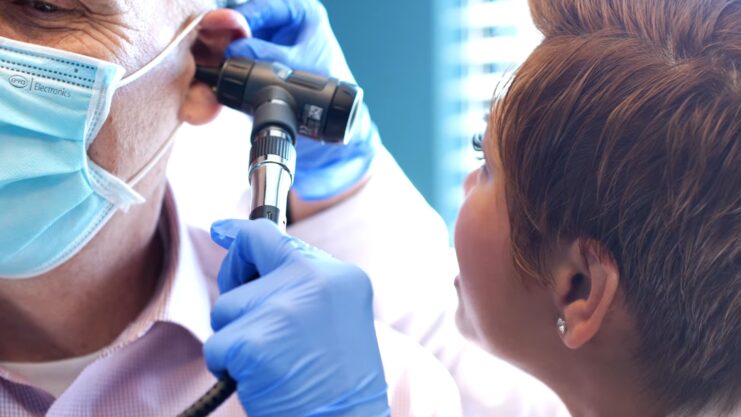
Recognizing the symptoms of Otitis Externa is the first step towards seeking appropriate treatment. This section will detail the various signs and symptoms of OE, providing readers with the knowledge needed to identify this condition promptly.
Identifying Symptoms of Otitis Externa
The symptoms of OE can range from mild to severe, with itching and pain being the most common indicators. The pain can intensify when the ear moves during activities like chewing, signaling the presence of an infection.
The ear might also feel plugged up, leading to a decrease in hearing capabilities. Drainage from the ears is another sign of OE. It’s essential to consult a doctor if you experience any of these symptoms to receive a proper diagnosis and treatment plan.
The Progression of Symptoms
If left untreated, the symptoms of OE can progress, causing increased discomfort and pain. The ear may feel more plugged up, and hearing may be significantly impaired. Persistent drainage and worsening pain necessitate immediate medical attention.
Early detection and treatment are crucial in managing the symptoms of OE effectively. Adherence to prescribed medications and following preventive measures can alleviate the symptoms and prevent the condition from worsening.
Treatment and Management of OE
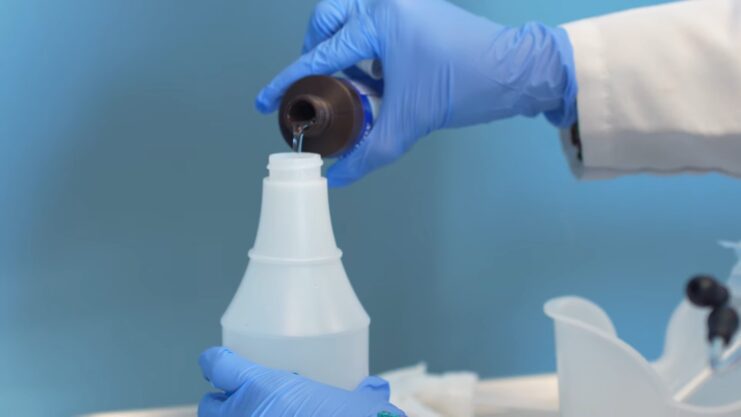
Treatment of Otitis Externa is pivotal in restoring ear health. This section will delve into the various treatment options available, the importance of adhering to prescribed medications, and additional steps that can aid in the healing process.
Approaches to Treating OE
The treatment of OE primarily involves the use of ear drops to combat the infection. Doctors may remove any drainage or pus from the ear canal and examine the eardrum to ensure no other infections are present. In some cases, oral medications may be necessary to address the infection effectively.
- Use ear drops as prescribed: It’s crucial to use ear drops until all symptoms have subsided for at least three days. Warming the bottle in your hands before application can prevent dizziness when the drops enter the ear.
- Avoid water exposure: Keeping the ear dry is essential during the treatment period. Opt for baths instead of showers and avoid swimming or other water-related activities.
Preventive Measures and Aftercare
Preventing OE involves maintaining the ear canal’s natural defenses against infection. Avoid inserting objects into the ear canal, and refrain from using earplugs as they can irritate the ear canal. If your ears itch frequently, consult a doctor for an appropriate diagnosis and treatment.
- Keep ears dry: After swimming or showering, dry your ears thoroughly and use a hair dryer on the lowest heat and speed setting to remove any residual moisture.
- Avoid removing ear wax: Ear wax acts as a protective barrier against infections. If ear wax accumulation becomes uncomfortable or affects hearing, seek medical advice instead of attempting to remove it yourself.
FAQ
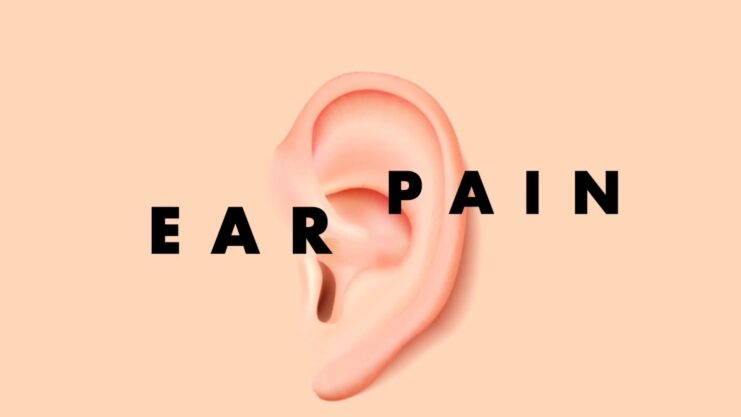
Can Otitis Externa be caused by allergies?
Yes, allergies can indeed contribute to the development of Otitis Externa. Allergic reactions can cause inflammation in the ear canal, making it more susceptible to infections.
Is OE contagious?
Generally, Otitis Externa is not considered contagious as it is often caused by bacteria or fungi that naturally inhabit the ear canal. However, if the infection is due to a contagious skin condition, there might be a risk of transmission through direct contact.
Can OE lead to complications if left untreated?
If left untreated, Otitis Externa can lead to complications such as cellulitis, bone and cartilage damage (malignant otitis externa), and, in rare cases, more widespread infections.
How long does it typically take for OE to heal with treatment?
With appropriate treatment, symptoms of Otitis Externa usually improve within a few days and completely resolve within one to two weeks. However, severe infections may take longer to heal.
Can I use over-the-counter ear drops to treat Otitis Externa?
While over-the-counter ear drops can provide temporary relief for mild cases, it is essential to consult a healthcare provider for an accurate diagnosis and appropriate treatment, especially for persistent or severe infections.
Is it safe to use ear candles to remove earwax if I have OE?
Ear candling is not a safe or effective method for removing earwax and is not recommended, especially for individuals with Otitis Externa, as it can potentially worsen the condition.
Can I swim if I am being treated for Otitis Externa?
It is recommended to avoid swimming and exposure to water while being treated for Otitis Externa to prevent aggravation of the condition and to allow the ear to heal properly.
Conclusion
This guide has provided a comprehensive overview of Otitis Externa, from its definition and causes to its symptoms, treatment, and preventive measures. Understanding and recognizing the signs of OE are crucial in seeking timely medical intervention and preventing the progression of the condition. By adhering to treatment plans and following preventive measures, individuals can maintain optimal ear health and avoid the discomfort associated with OE.

